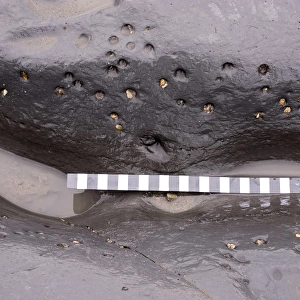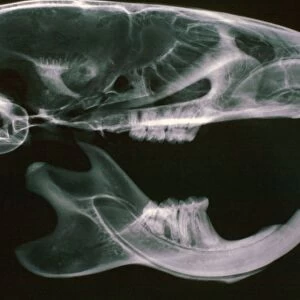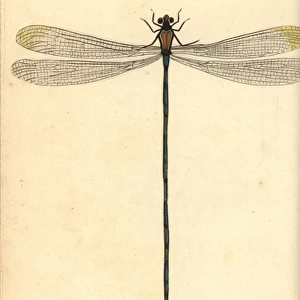Home > Animals > Mammals > Muridae > Maximus
Fossils of extinct Cidarites, Spalangus, Nudeolitus
![]()

Wall Art and Photo Gifts from Mary Evans Picture Library
Fossils of extinct Cidarites, Spalangus, Nudeolitus
Fossils of extinct Cidarites, Spalangus, Nudeolitus species, and Megalosaurus and Gyrodus teeth.. Handcolored lithograph from Dr. F.A. Schmidts Petrefactenbuch, published in Stuttgart, Germany, 1855 by Verlag von Krais & Hoffmann. Dr. Schmidts Book of Petrification introduced fossils and palaeontology to both the specialist and general reader
Mary Evans Picture Library makes available wonderful images created for people to enjoy over the centuries
Media ID 14219483
© Florilegius / Mary Evans
Coronatus Extinct Fossil Maximus Megalosaurus Nobilis Palaeontology Petrefactenbuch Petrification Schmidt Teeth Thorn
FEATURES IN THESE COLLECTIONS
> Animals
> Mammals
> Muridae
> Maximus
> Europe
> Germany
> Stuttgart
EDITORS COMMENTS
This handcolored lithograph, taken from Dr. F.A. Schmidt's Petrefactenbuch, published in Stuttgart, Germany, in 1855 by Verlag von Krais & Hoffmann, showcases an intriguing collection of extinct fossils, including the Cidarites species, Spalangus, Nudeolitus, Megalosaurus, and Gyrodus teeth. Dr. Schmidt's Book of Petrification was a groundbreaking publication that introduced both the specialist and general reader to the fascinating world of fossils and palaeontology. The Cidarites fossils depicted in this print include the Maximus, Coronatus, Subangularis, Nobilis, and Scatatus species. These ancient marine organisms, characterized by their calcareous tests, lived during the Jurassic and Cretaceous periods. The Spalangus and Nudeolitus species, also marine invertebrates, are represented by their distinctive spiral and conical shells, respectively. Two sets of teeth from the Megalosaurus and Gyrodus are also displayed in this image. The Megalosaurus, one of the first large theropod dinosaurs discovered, roamed the Earth during the Late Jurassic period. Its serrated teeth were well-suited for tearing flesh. The Gyrodus, an ammonite, lived during the Late Cretaceous period and is identified by its distinctive, coiled shell with a distinctive, wing-like structure. This intricately detailed lithograph, handcolored by skilled artists, offers a glimpse into the rich history of palaeontology and the awe-inspiring world of ancient life forms. Dr. Schmidt's Petrefactenbuch was a testament to the scientific curiosity and artistic skill of the 19th century, and this image remains a captivating reminder of the enduring allure of the fossil record.
MADE IN AUSTRALIA
Safe Shipping with 30 Day Money Back Guarantee
FREE PERSONALISATION*
We are proud to offer a range of customisation features including Personalised Captions, Color Filters and Picture Zoom Tools
SECURE PAYMENTS
We happily accept a wide range of payment options so you can pay for the things you need in the way that is most convenient for you
* Options may vary by product and licensing agreement. Zoomed Pictures can be adjusted in the Cart.





